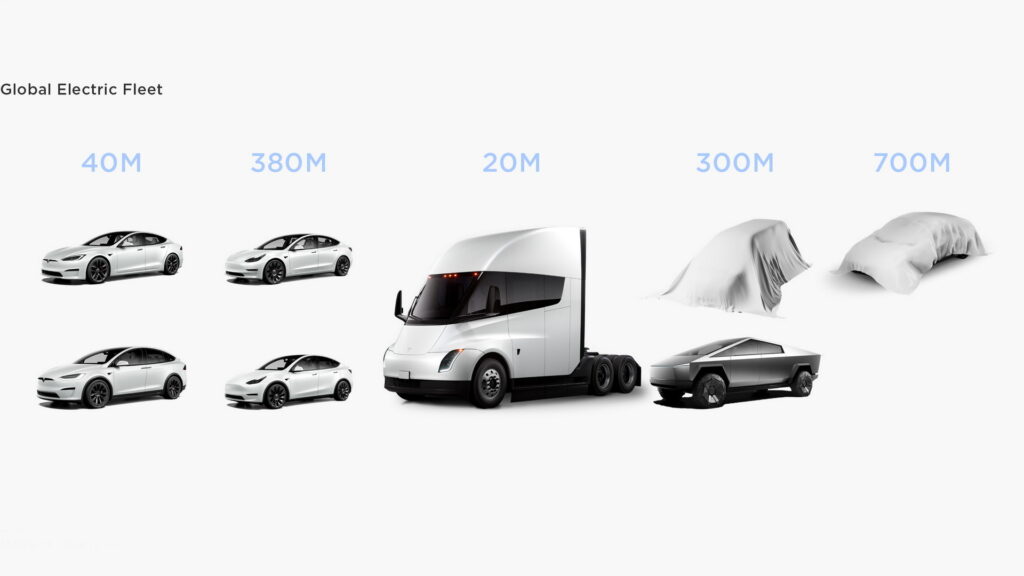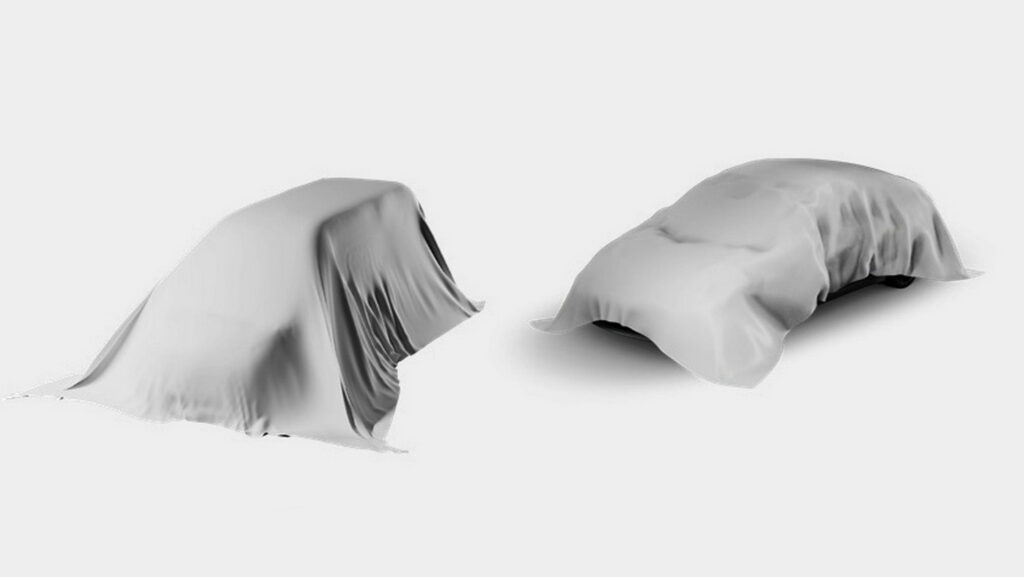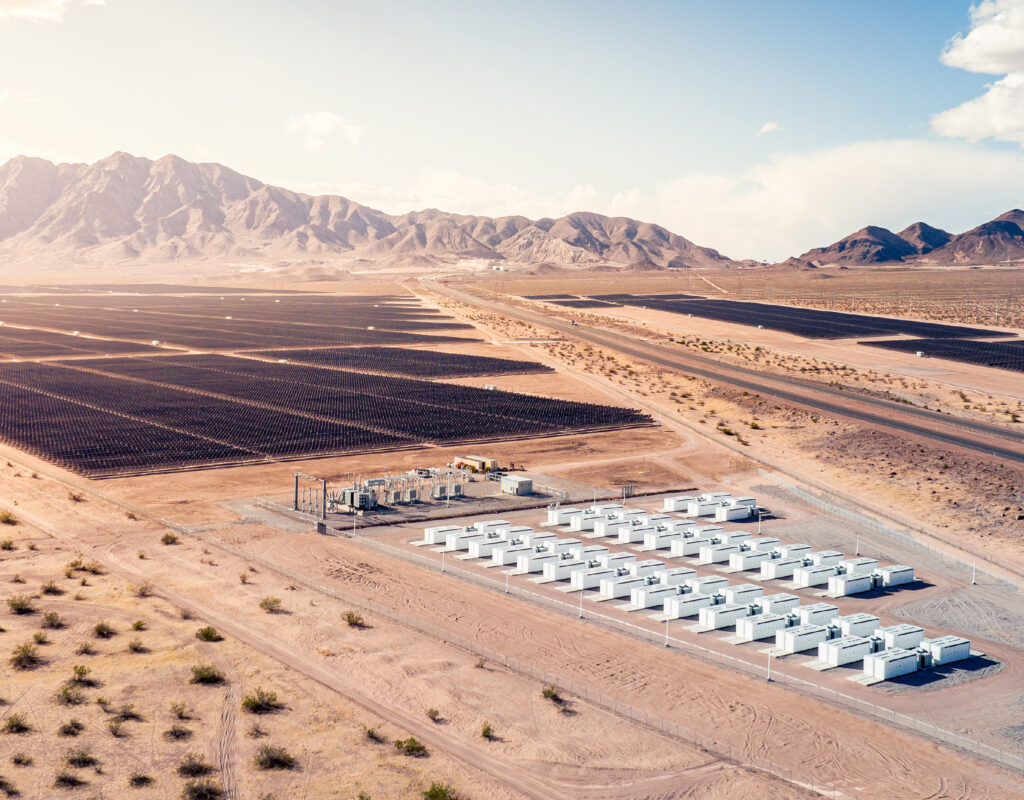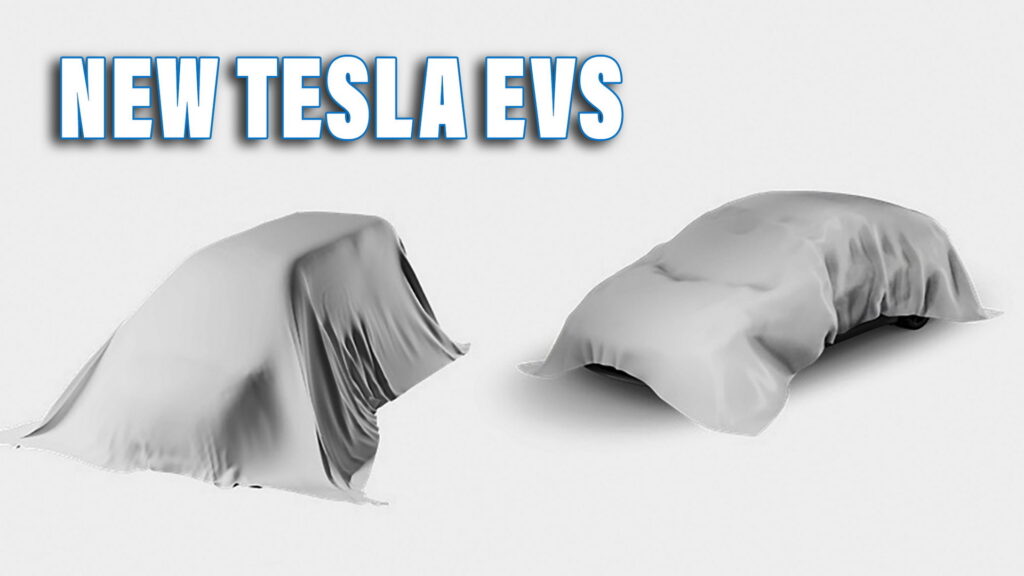Tesla didn’t announce any information about the upcoming compact EV at the Investors Day event on March 1, but it appears that a much-anticipated teaser has finally been revealed. Not one but two new EVs were shown under wraps as part of the “Tesla Master Plan Part 3” presentation that appeared on the automaker’s website, looking like a minivan/LCV and the aforementioned compact model.
The figures of the two new Tesla EVs were placed right next to the Cybertruck, suggesting that their reveal could be imminent. Interestingly, there was no mention of the Tesla Roadster, with its debut likely being pushed back further into the future in favor of higher-priority models for the brand.
Read: Tesla’s Cybertruck Crash Tease Leaves EV Untouched And Fans Crushed

Unfortunately, there is not much to gain from the covered silhouettes of the unnamed EVs. However, the boxy shape of the first one alongside references in other parts of the presentation suggest it is an upcoming fully electric commercial/passenger van from Tesla. We don’t know if the teased model has anything to do with the robotaxi that Musk announced last year, although this one was described as a dedicated model with a “quite futuristic” look.
As for the compact EV which has been a hot topic of discussion since it was officially announced in 2020, it sports a low-slung aerodynamic shape with a long bonnet and a slopping roofline towards the back. We can also see a small portion of its front bumper, which has an opening similar to the larger Tesla Model 3/Y. According to a recent report, the company wants to produce up to 4 million units of the compact EV on an annual base by 2030, using its four gigafactories in the US, Mexico, Germany, and China.
The Battery Capacities For Each Segment

On another page of the presentation, there is a table showing Tesla’s estimates for the fitting battery capacities for each segment. There, the automaker proposes a 53 kWh LFP battery for compact EVs, which is smaller than the 75 kWh LFB battery used in the midsize segment (Tesla Model 3/Y). On the other hand, the commercial/passenger van gets a proposed 100 kWh battery pack which is the same size as the one needed for large sedans/SUVs and trucks (Tesla Model S/X and Cybertruck). However, instead of LFP (lithium iron phosphate) tech, the larger battery will use High Nickel (zero cobalt Nickel Manganese cathodes) technology which is more fitting to long-range vehicles.
Moving further up to the size scale, Tesla thinks that a 300 kWh LFP battery would be enough for buses, a 500 kWh LFP unit for Short Range Heavy Trucks (Semi Light), and an 800 kWh High Nickel unit for Long Range Heavy Trucks (Semi Heavy). In total, the world would need a massive 112 TWh of batteries to power the entire fleet of 1.403 billion vehicles that are currently on the road – given they were all fitted with EV powertrains.
The Master Plan Part 3 paper that was published on Tesla’s website on April 5, is actually a continuation of the Investors Day presentation from March 1. More specifically, the paper “outlines the assumptions, sources and calculations” behind that proposal, getting into a little bit more detail about Tesla’s take on “how to reach a sustainable global energy economy through end-use electrification and sustainable electricity generation and storage”. Those interested can read the entire presentation here.





